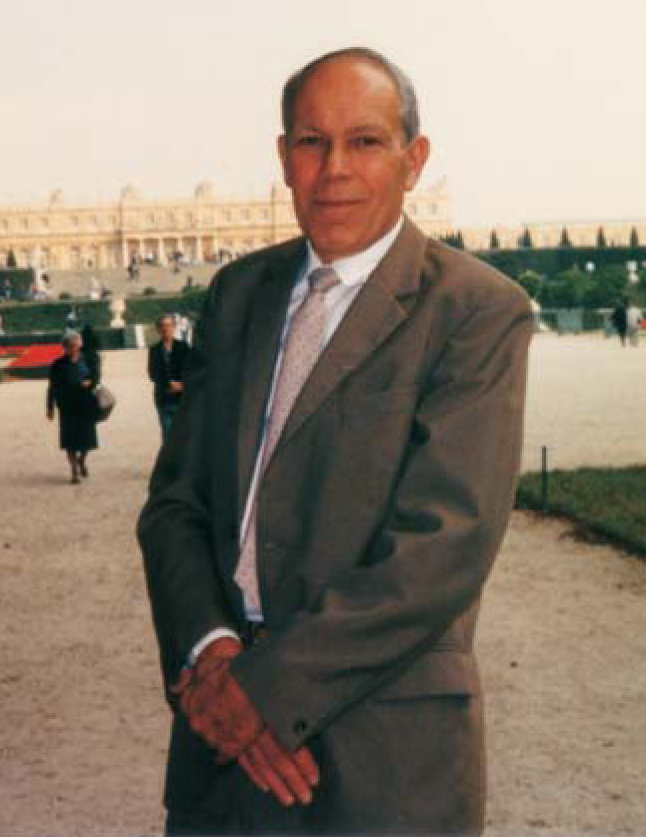Nikolai Borisovich Delone
DOI: 10.1063/1.3141949
Nikolai Borisovich Delone, a founder of the field of atomic and molecular multiphoton physics, died in Moscow on 11 September 2008, following a cerebral stroke.
Delone was born in Leningrad (now Saint Petersburg, Russia) on 22 May 1926 to the family of mathematician Boris Delone. After graduating in 1951 from the Moscow Engineering Physical Institute, Delone joined the P. N. Lebedev Physics Institute. There he did PhD work in nuclear physics and bubble-chamber physics and earned his degree in the late 1950s. In 1965, the year after the appearance of Leonid Keldysh’s seminal theoretical paper on strong-field ionization of atoms, Delone published the first paper on experimental observation of multiphoton ionization. His groundbreaking work greatly influenced the worldwide development of the physics of laser–atom interactions.
With scientists from Uzhgorod (now in Ukraine) in 1979, Delone made the first experimental observation of two-electron ionization of atoms in a laser field. That same year one of us (Fedorov), on behalf of Delone, reported the result in Bénodet, France, at one of the early international conferences on multiphoton processes. At that time Delone could not get permission from the Soviet authorities to go abroad. The announcement engendered intensive multielectron ionization research internationally. Ionization of two or more electrons remains a hot topic today.
After receiving from one of us (Chin) the first experimental results on tunneling ionization of atoms using a carbon dioxide laser, in 1986 Delone, with Maxim Ammosov and another of us (Krainov), suggested a formula, known nowadays as the ADK formula, for tunneling ionization of atoms in a laser field. That formula has since been used as a benchmark for interpreting practically all experiments and for testing theories in strong-field ionization of atoms and molecules.
In 1983–94 Delone, together with Sergei Goreslavski and Krainov, published in the Journal of Physics B a series of papers on the dipole matrix elements in the near-threshold region of the atomic spectrum calculated in the Wentzel-Kramers-Brillouin approximation. Those fundamentally important results found their direct application in the theories of above-threshold ionization and interference stabilization of atoms.
During his career Delone published more than 200 papers in scientific journals. His four-book series on atoms in a strong laser field and multiphoton processes continues to be used as laser–atom physics manuals by students in universities and scientists at laboratories throughout the world.
Delone was a great teacher and scientific supervisor. In 2002–05 he wrote a series of Russian textbooks for high-school students. For many years he was a lecturer at the Moscow Institute of Physics and Technology. Starting in 1973, Delone organized for the Moscow Institute of Physics and Technology a weekly scientific seminar on multiphoton processes, which still exists and is regularly attended by scientists from institutes and universities in Moscow and other Russian cities. His many PhD students came from Tashkent, Tbilisi, Kishinev, and other cities of the former Soviet Union. The vast majority of his students consider Delone to be the best teacher they ever had.
After the collapse of the Soviet Union, Delone ventured abroad under the sponsorship of the North Atlantic Treaty Organization’s linkage grant program. Leading a team of Russian scientists in multiphoton physics in 1992, he collaborated with Chin in Canada. Many of the Russian scientists quickly expanded their scope of interaction with other scientists in Canada, the US, and Europe. Such collaborations are still going strong and have separated into many teams.
Delone was always cheerful and enthusiastic in his work, although in the 1970s his son’s political problems caused many complications for him. Despite those, he kept working. Throughout his career, Delone was a highly creative and respected leader of the multiphoton community in the former Soviet Union and internationally. He had a gift for arousing enthusiasm in other people. Delone proved the value of life and left this world forever with a smile.

Nikolai Borisovich Delone

More about the Authors
Vladimir P. Krainov. 1 Moscow Institute of Physics and Technology, Dolgoprudnyi, Russia .
Gérard Mainfray. 2 Atomic Energy Commission, Saclay, France .
See Leang Chin. 3 Laval University, Quebec, Canada, Columbus, US .
Joseph H. Eberly. 4 University of Rochester, Rochester, New York, US .
Pierre Agostini. 5 Ohio State University, Columbus, Ohio, US .
Mikhail V. Fedorov. 6 A. M. Prokhorov General Physics Institute, Moscow, Russia .
